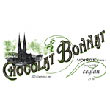When the British took control of this island during their colonial exploits, they imported indentured labor from Tamil Nadu on the mainland of India to work the plantation economy. Once it achieved independence after WWII & the British left, the locals changed the name from Ceylon (forced upon it earlier by the Portuguese) to Sri Lanka (Sanskrit for ‘Sacred Island’). This ethnic enclave then tore apart in a civil war caused by the division between the Sinhalese majority & the more recently arrived Tamils that lasted into this century.
Cacáo here has a similarly fractious history. A broad cross-section of varieties were imported initially by the Dutch in 1819 from, in all likelihood, The Philippines & maybe Java. More came throughout the 1800s from Trinidad, then Nicaragua – creating a predominance of Amelonado & Calabacillo types.
One renowned exception: Old Red Ceylon rumored to be an heirloom Criollo of Venezuelan ancestry that established this island’s reputation for high quality. Today it can be found only in an isolated pocket, if at all, so that its discovery would seem to be serendipitious… like the name of the island the Arabs gave it: “Serendip”.





